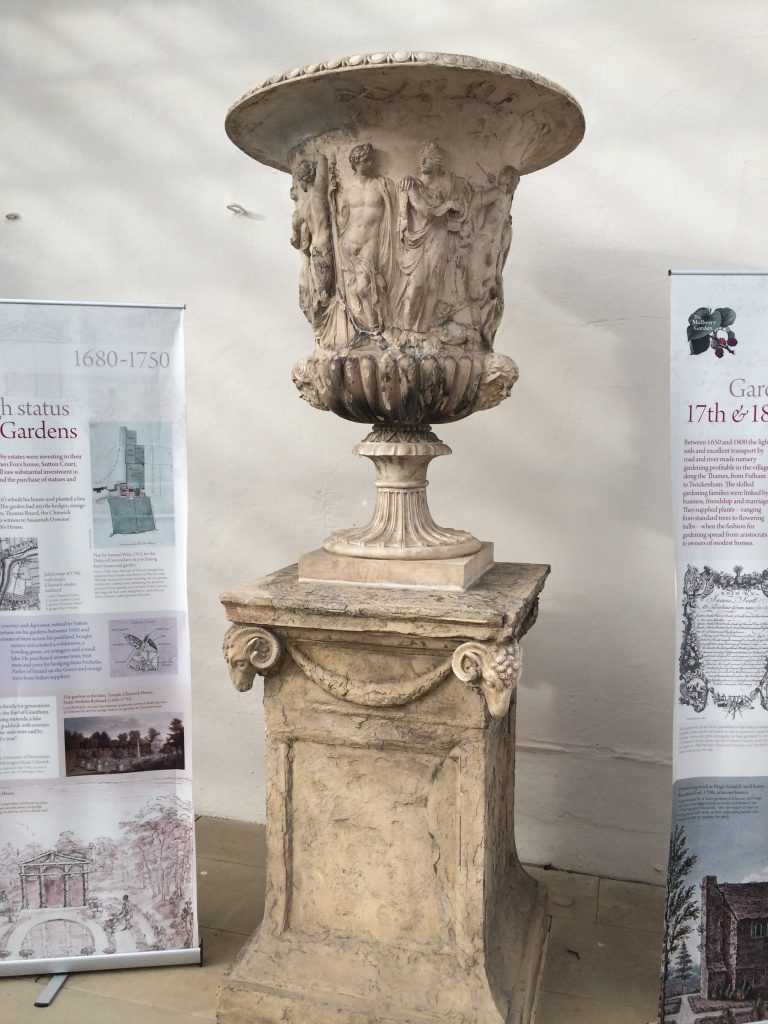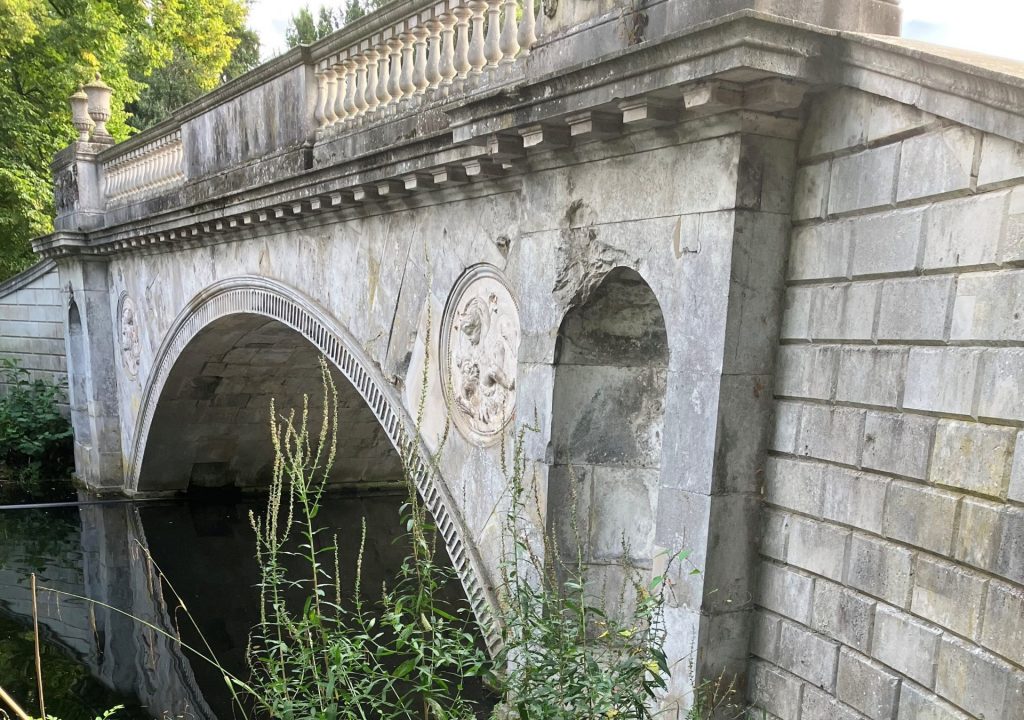An A to Z of the Chiswick House Archives: C for Coade Stone
In the third edition of our A-Z archive series, volunteer archivist Cluny Wells picks Coade stone for her letter C.
You may have noticed the striking vases that are in and around our House and Gardens, but there’s a much richer history behind them than you may have first thought. Manufactured in her Lambeth factory, Eleanor Coade was responsible for producing not only the Medici and Borghese vases in the Conservatory, but also the decorative medallions and Paterae on the Classic Bridge.
Eleanor Coade’s Early Life
Eleanor Coade was born in 1733 in Exeter, after her large extended family had moved there from Dorset. Her immediate family then moved to London in 1762. About seven years later, following her father’s death, Eleanor established herself as a British businesswoman in the factory in Lambeth. The Coade Factory was known for manufacturing neoclassical statues, architectural decorations and garden ornaments made of Lithodipyra – which means ‘stone fired twice’, and so the ceramic stoneware product was marketed as ‘Coade’s Lithodipyra’.
There were many start-up ‘artificial stone’ businesses around at that time, but only Eleanor Coade succeeded long-term, with the business lasting for 50 years. She combined high-quality manufacturing and artistic taste, with entrepreneurial business and marketing skills. These were great achievements in Georgian times, especially for an unmarried woman.

Coade Stone at Chiswick House & Gardens
From 1799 until his death in 1813, Eleanor employed her cousin John Sealy as a partner. As a result, the finished products at that time would have had the name ‘Coade Sealy’ on them. Our vases in the Conservatory are stamped with that name and dated 1801, which means that they were probably bought by the 5th Duke of Devonshire. After the Duke’s son ‘Hart’ had bought up the neighbouring property Moreton Hall and had the Conservatory designed and built, the vases were placed on the Conservatory steps. More recently, the vases have been moved inside the Conservatory for protection from the elements, with copies outside in their place.
The Classic Bridge, built in 1774 for the 5th Duke of Devonshire, also has some Coade decoration on the facings: four oval plaques/medallions with a cherub on each one, and on three sides of the four-sided piers are ‘paterae’, a bowl-shaped feature. The Coade catalogue offered 98 different sizes and designs of paterae, and these generally had lines of fluting radiating from the centre of the plaque. The oval paterae on the bridge each have 12 acorns, facing into centre.

Eleanor Coade’s Working Life
Despite being unmarried ‘Mrs Coade’ was the title often used by Eleanor. In Georgian times this was a courtesy title given to unmarried businesswomen. However, when she exhibited at the Society of Artists between 1773 and 1780, she was listed in their catalogue as ‘Miss Coade’ and ’Sculptor’. The works exhibited were probably produced by the company, rather than being modelled by herself, especially as she employed people like the sculptors John Bacon and Joseph Panzetta, and several other designers and modellers. The company went on to be used by all the important Georgian architects – including Robert Adam, Capability Brown, Henry Holland, John Nash, Humphry Repton and Sir John Soane to name just a few. Apparently Soane used Coade stone from the age of 27 until he was 75.
After her partner, John Sealy, died in 1813, she employed William Croggan as her manager until her death in 1821, but never made him a partner. After her death he had to go to Court to buy the company for himself.
The Coade company had both Commissions from Royalty and the Government, and Coade pieces have been found all over Britain. They also exported to other parts of the world, such as the USA, the Caribbean, Poland and Russia.

Coade stone details on our Bridge. Photographer – Mark Lawson
Elizabeth Coade’s Personal Life
Mrs Coade was a remarkable person – a very devout and independent woman who never married, and who cared about her relatives and close friends. She left legacies to ministers of different denominations to give out to those of their congregations who needed help. She also left money to other women, usually spinsters or widows, although she did leave bequests to three married women with the stipulation that they must sign for their legacies themselves in front of the executors, whatever their married status. It was the norm at that time for husbands to sign for their wives and to take control of any finances involved. This was a century before the Married Women’s Property Act gave a wife control over her own money. Eleanor Coade died in 1821, and is buried in Bunhill Fields Cemetery, Islington, in an unmarked grave.

Perhaps the best known Coade piece in Britain is the South Bank Lion, which stands at the south end of Westminster Bridge. It was originally one of a pair placed on top of the Red Lion Brewery, a once-familiar London landmark that stood on the site of the Royal Festival Hall, possibly close to Eleanor Coade’s factory at Narrow Wall. After the Brewery was demolished in 1949, King George VI instructed that the lion be saved. It was moved first to Waterloo Station, and then transferred to the south-eastern corner of Westminster Bridge in 1966. The crisp white appearance of this national symbol is testament to the durability of Coade stone.
Coade’s Records
- The Catalogue of designs – over 700 different designs. (1784). Copies in the British Library and the Royal Academy Library.
- The Handbook of Coade’s Gallery, covering the years 1769 to 1799. A copy is in the British Library.
- The Workbooks of William Croggan, Mrs Coade’s manager from 1813. These books are in the Public Record Office.